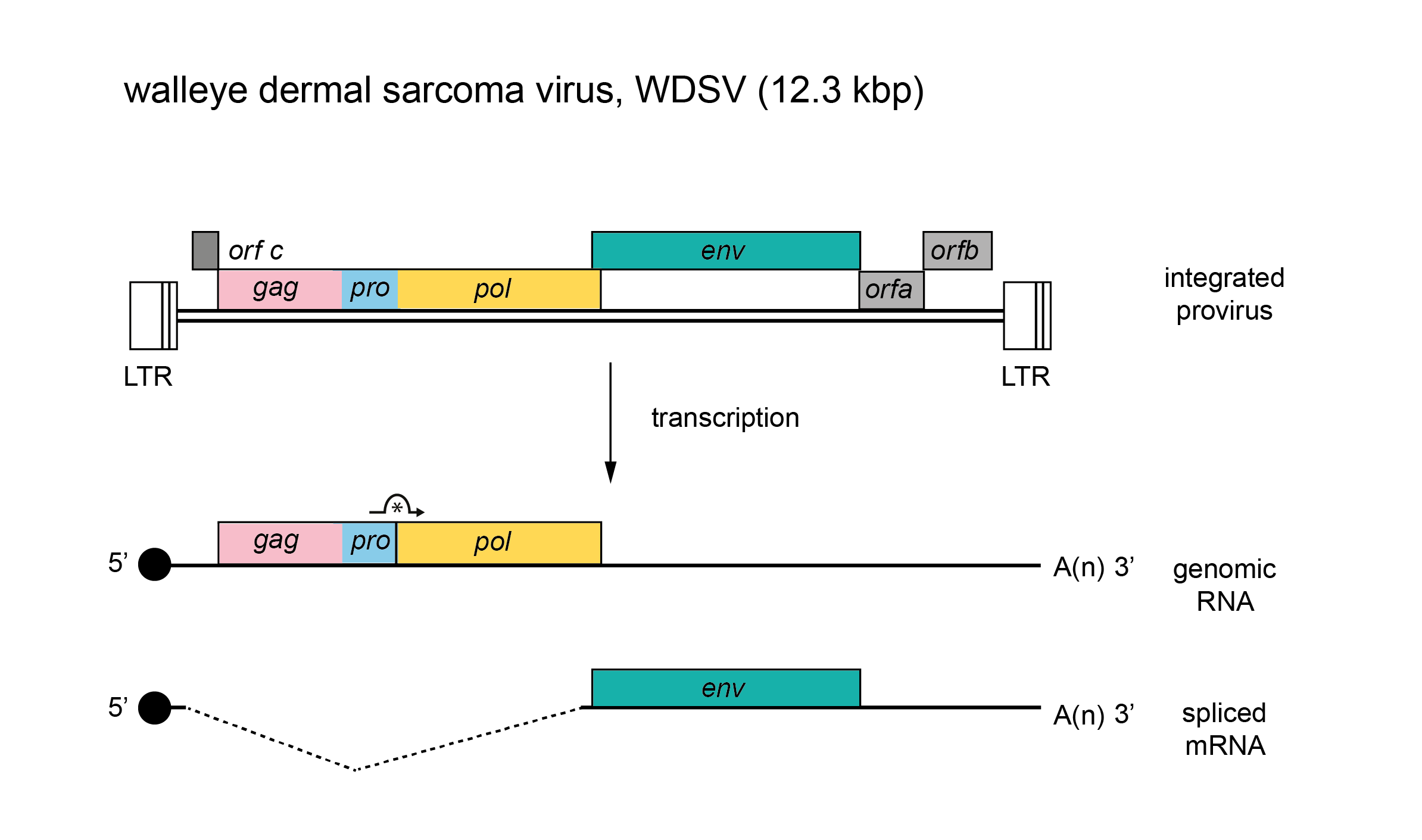Subfamily: Orthoretrovirinae
Genus: Epsilonretrovirus
Distinguishing features
All currently classified members of the genus are exogenous retroviruses of fish, although related endogenous retrovirus (ERV) sequences have been described. In addition to the core gag, pro, pol and env genes, members of the genus have one or more accessory genes. Phylogenetic analysis based on the polymerase region shows that the walleye and perch retroviruses cluster and have diverged significantly from the snakehead retrovirus.
Virion
Morphology
Virions have typical C-type particles approximately 150 nm in diameter. For more details see discussion under family description.
Physicochemical and physical properties
See discussion under family description.
Nucleic acid
See discussion under family description.
Genome organization and replication
Epsilonretroviruses are complex retroviruses in that their genomes range from 11.7 to 12.8 kb and contain 1–3 ORFs, presumably encoding accessory proteins, in addition to those encoding the structural proteins and enzymes of the virion (Figure 1.Epsilonretrovirus). Orf a is present in all three walleye retroviruses and encodes the rv-cyclin protein, which functions in the control of transcription. The roles of the two additional ORFs (orf b and orf c) in walleye dermal sarcoma virus (WDSV) or the single ORF in snakehead retrovirus have not been determined. The long terminal repeats (LTRs) of the fish retroviruses range from about 500 to 650 nt, of which the U3 region is about 450 nt, R is about 80 nt and the U5 region is about 75 nt. The primer used by the walleye retroviruses is tRNAHis, whereas the snakehead retrovirus uses tRNAArg.
 |
| Figure 1.Epsilonretrovirus. Epsilonretrovirus genome organization. The 12.3 kbp walleye dermal sarcoma virus (WDSV) provirus genome is shown, with LTRs, protein-coding regions (gag, pro, pol, env, orf a, orf b and orf c) and transcripts (solid line arrows with protein names added) marked. The asterisk under a curved arrow indicates a ribosomal readthrough site. |
Biology
Viruses are associated with seasonal tumors of fish. Viruses in the genus have not been studied as thoroughly as those representing other genera. Virological insights remain limited, with a focus on mechanisms of tumor formation and function(s) of the virally encoded cyclins.
Species demarcation criteria
The list of species demarcation criteria include differences in genome sequence and presence/absence of additional accessory genes. The genus Epsilonretrovirus includes three species of fish retrovirus, which are distinguished from one another on the basis of phylogenetic diversity. In addition, three viruses, snakehead retrovirus (SnRV), salmon swimbladder sarcoma virus (SSSV) and perch hyperplasia virus (PHV), are unclassified viruses in the genus. As additional fish retroviruses are identified and characterized, both SnRV and SSSV may provide the basis for additional genera. PHV has been sequenced only within the pol gene, and its status remains tentative until further sequence information becomes available.

